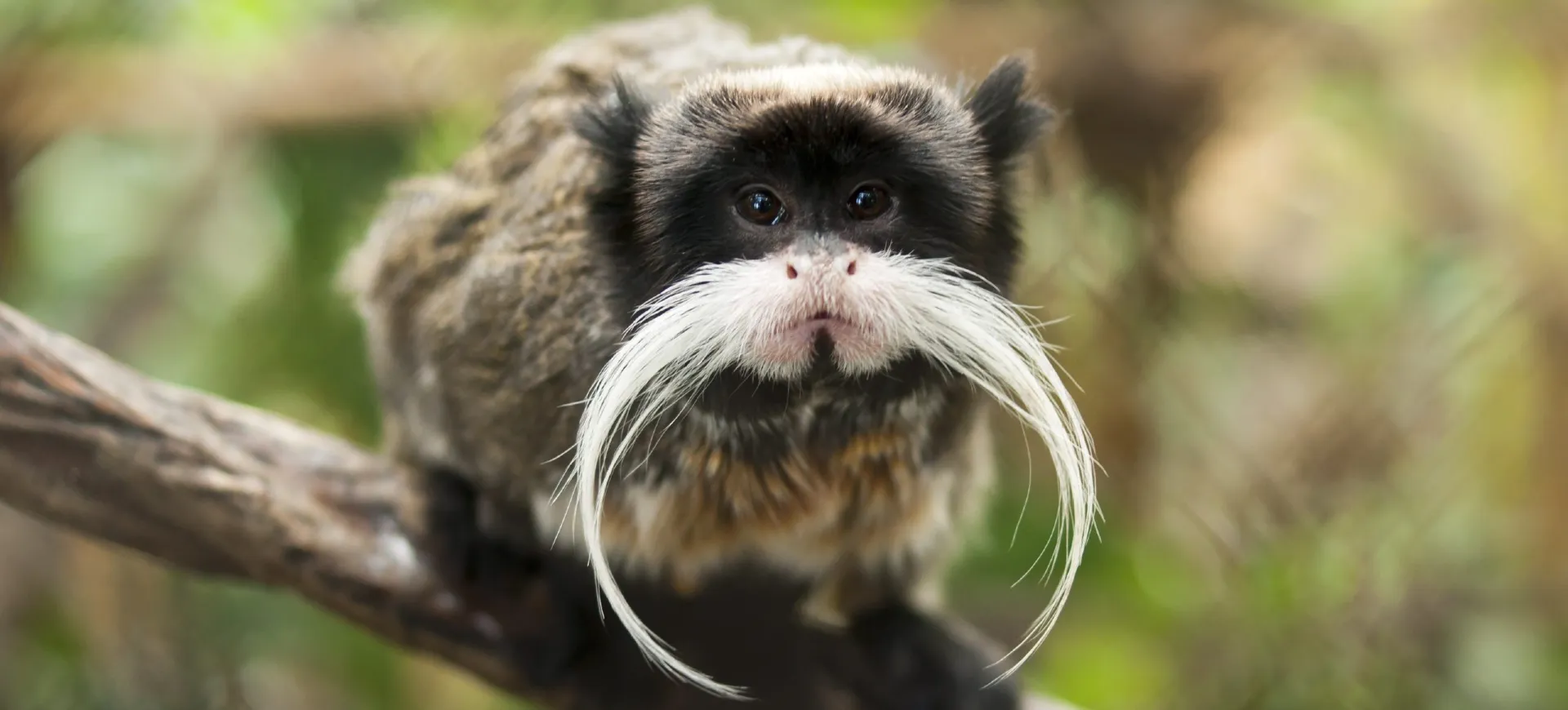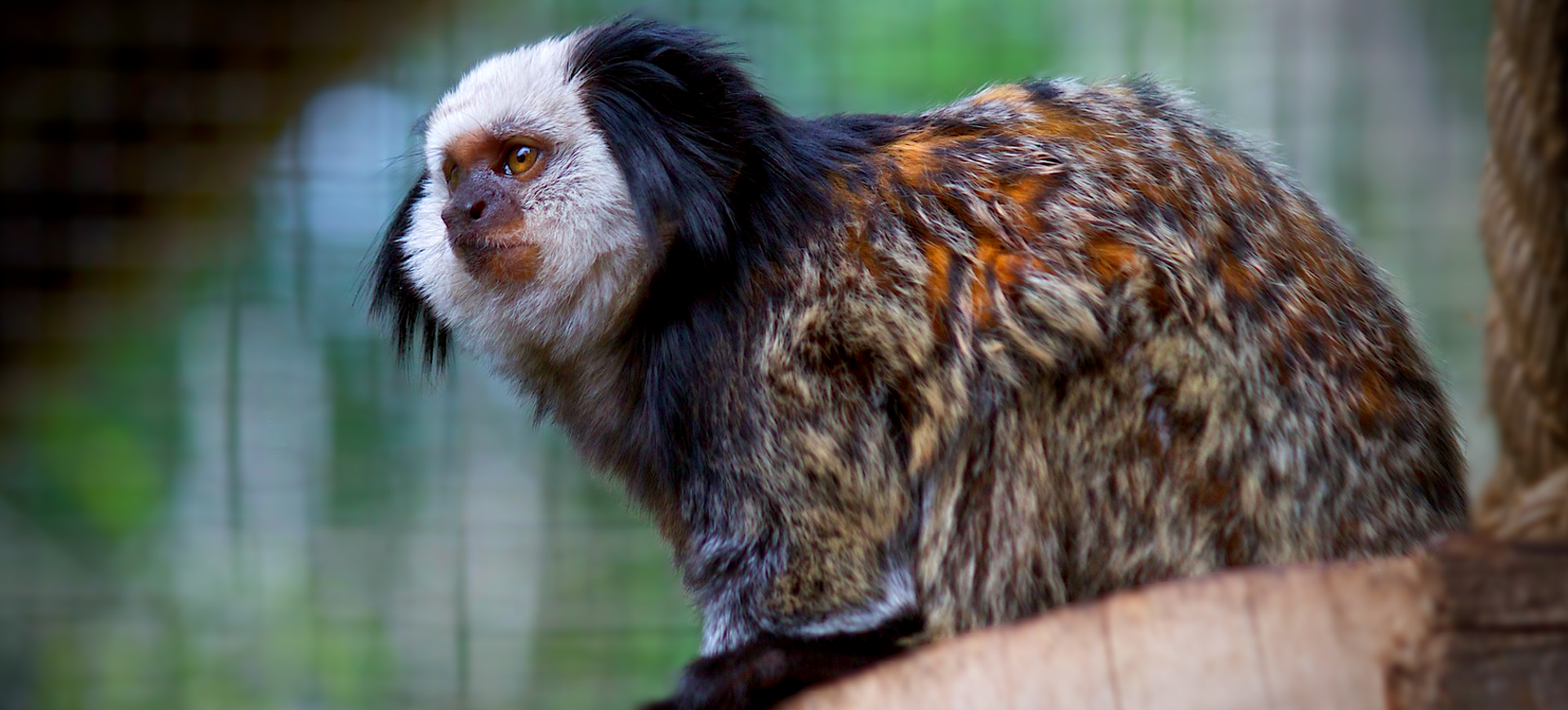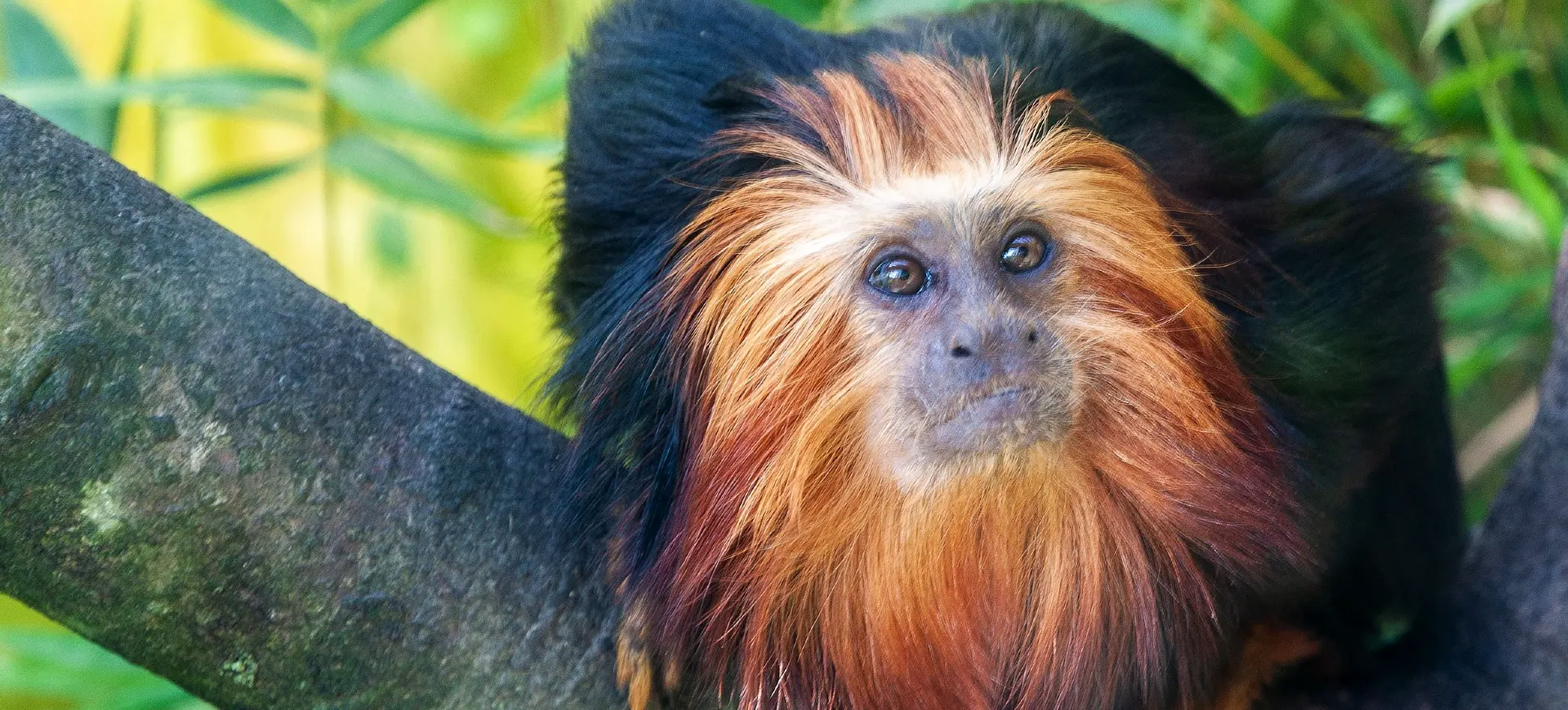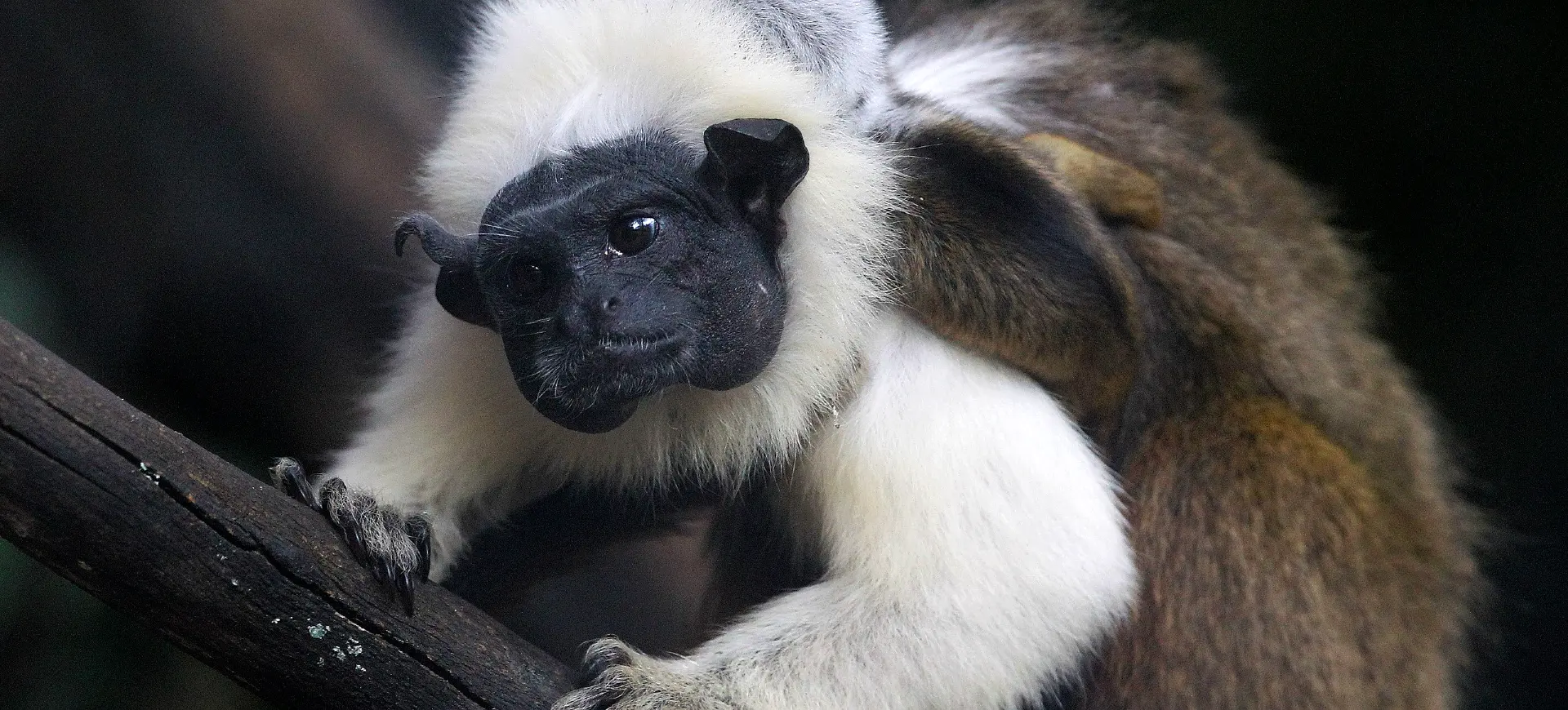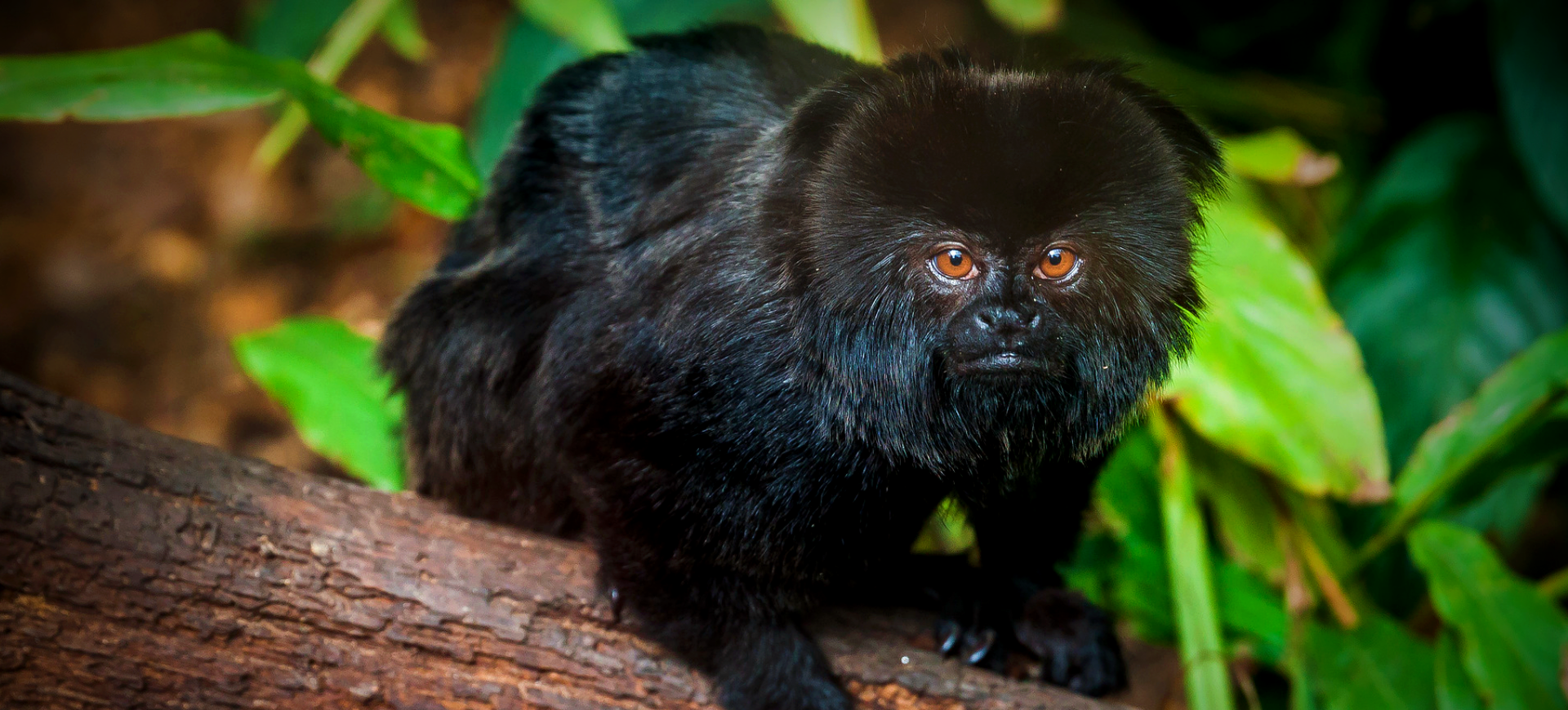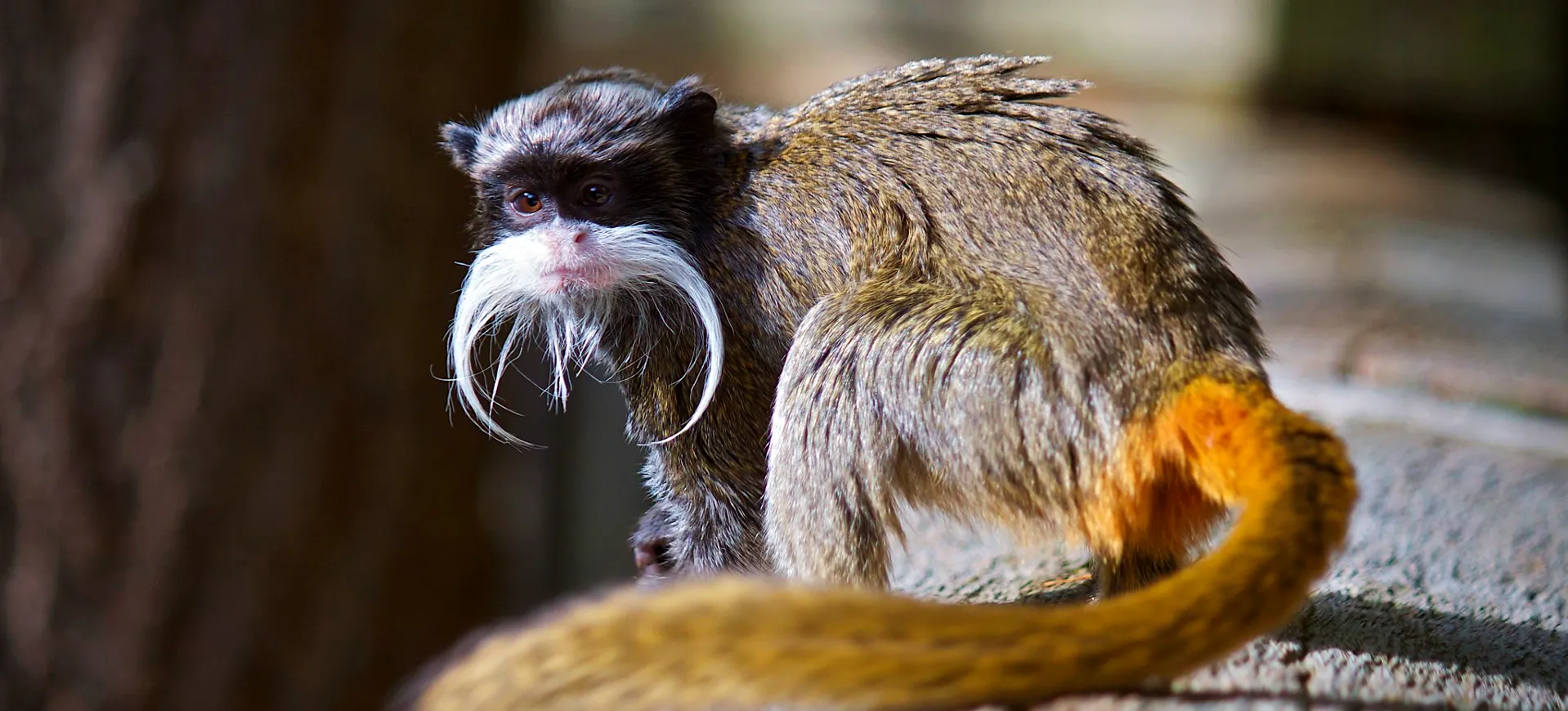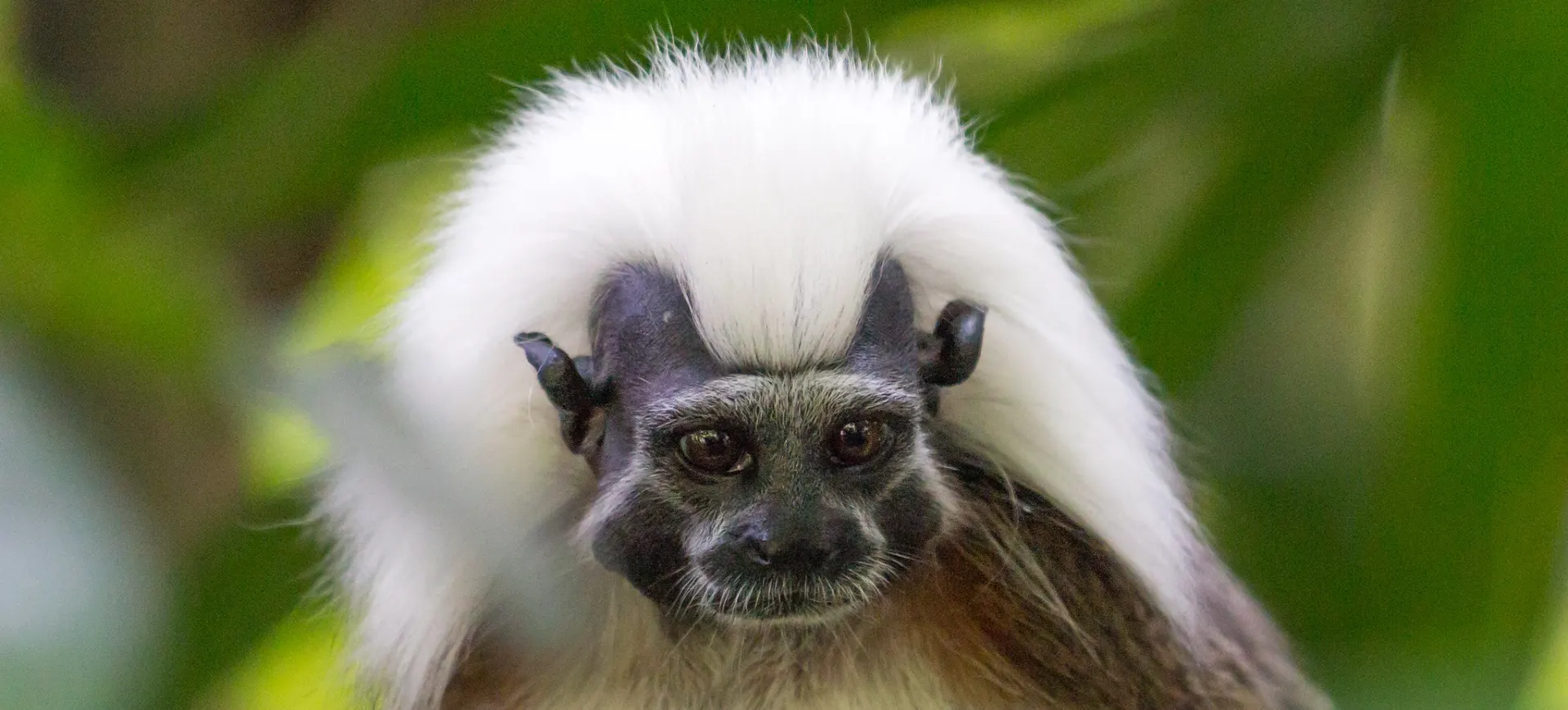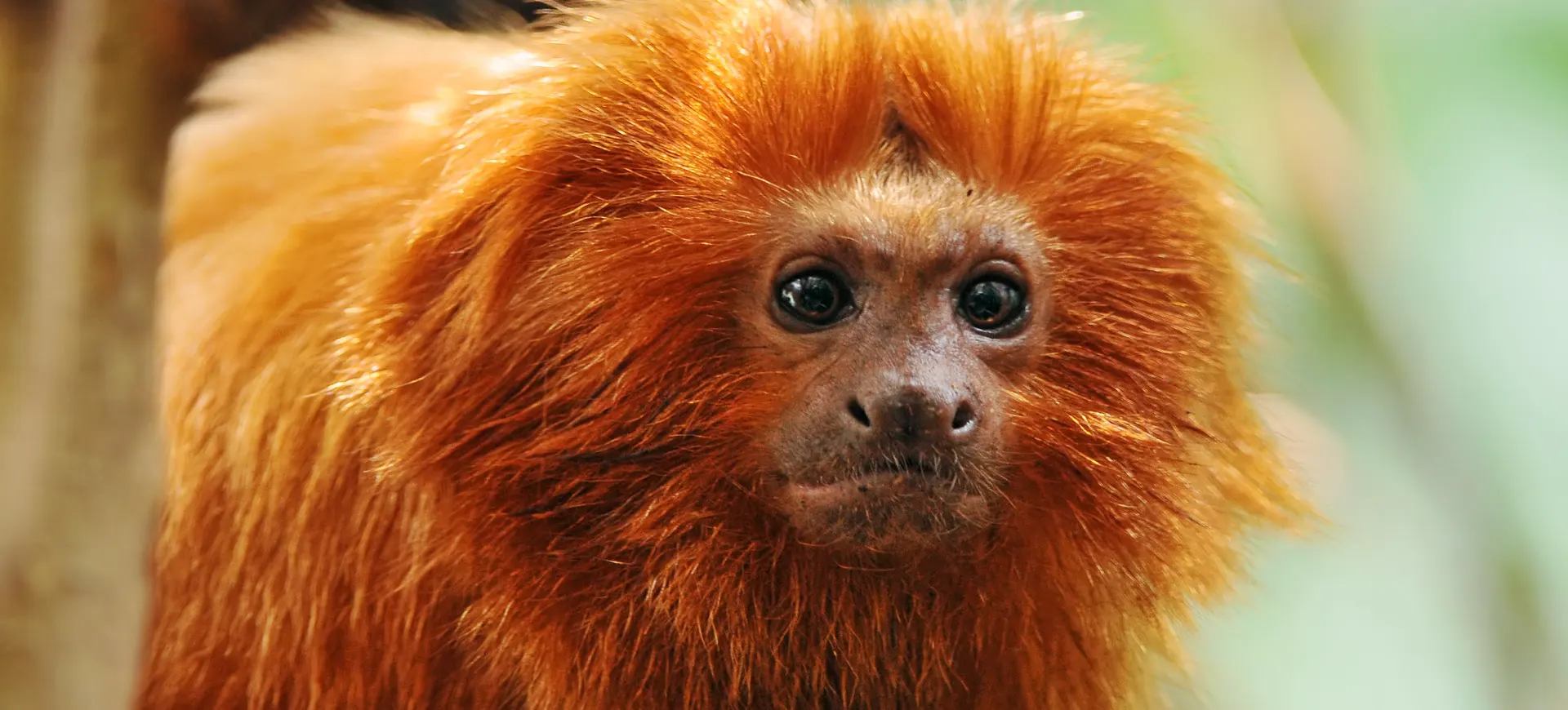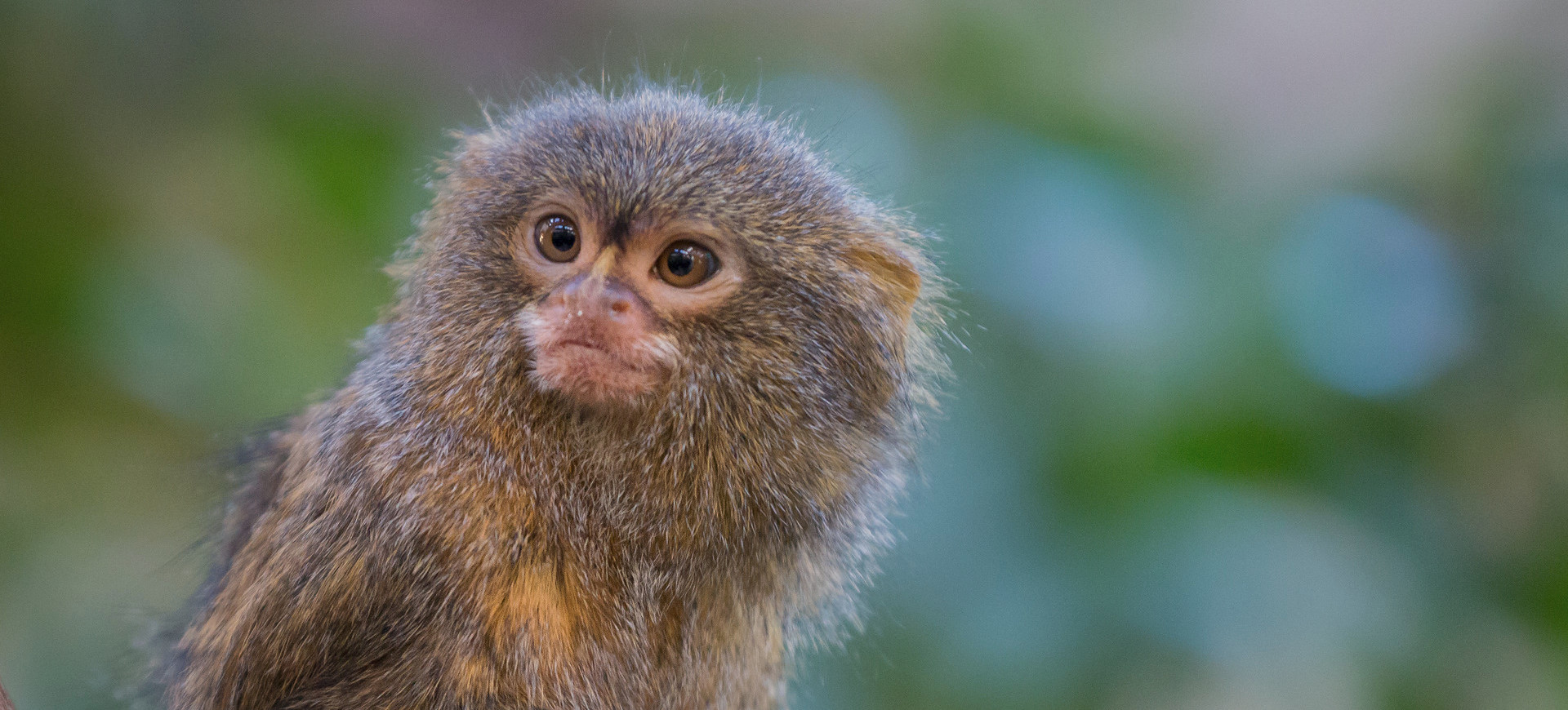Overview
The Golden-handed Tamarin, also known as the Midas Tamarin, is a small New World monkey recognized for its vibrant golden-orange fur on the hands and feet, which lends it its unique name. They possess a dark coat with a coppery tone alongside a lengthy, non-prehensile tail that aids in balance while navigating the forest canopy. Its overall body is slender with elongated limbs and sharp claw-like nails known as tegulae, a trait distinctive of callitrichids, facilitating them to climb and cling onto tree trunks.
Golden-handed Tamarins exhibit several adaptations favorable for an arboreal lifestyle in their physical structure. They bear keen visual acuity, with color and depth perception attributed to their forward-facing eyes. Notably, their facial features are expressive and can portray their emotional state. The overall morphology of these species includes a low and rounded skull, diminutive muzzle, and an underbite, characteristic of tamarins.
Native to the northeastern Amazon rainforest of South America, these animals typically dwell in the forest’s dense understory and mid-canopy areas. The species is highly social and operates in groups exhibiting cooperative behaviors. They communicate through various vocalizations, visual signals, and scent markings. Owing to their small size, they maintain highly agile and swift locomotion through the tree branches, primarily using quadrupedal and leaping movements.
Taxonomy
Kingdom
Phylum
Class
Order
Family
Genus
Species
Type
Physical Description:
The Golden-handed Tamarin displays a contrasting coloration with predominantly dark brown or black fur covering most of its body and bright golden-orange fur adorning its hands and feet. The fur has a somewhat woolly texture. They have a mane that extends from the ears around the jawline and striking white patches on their cheeks, adding to their distinctive appearance.
The body shape of the Golden-handed Tamarin is slim, with elongated limbs and a long tail, primarily for balance and not for grasping. They have claw-like nails instead of the flat nails seen in other primates, which they use for climbing and clambering along the trees. Their size is typically small, which aids in their swift and agile movement through the dense forest canopy.

Lifespan: Wild: ~15 years || Captivity: ~20 years

Weight: Male: 1.1 lbs (0.5 kg) || Female: 1.0 lbs (0.45 kg)

Length: Male: 9.1 in (23 cm) || Female: 8.7 in (22 cm)

Height: Male: 9.8 in (25 cm) || Female: 9.5 in (24 cm)

Top Speed: 24 mph (39 km/h)
Characteristic:
Native Habitat:
Golden-handed Tamarins are native to the northeastern Amazon rainforest of South America, more precisely in parts of Brazil, French Guiana, Guyana, Suriname, and Venezuela. They typically inhabit dense, humid, mature rainforests and have also been observed in secondary-growth forests. Their arboreal lifestyle makes the densely vegetated, complex, multi-layered forest habitat most suitable for their survival.
These animals prefer environments with high vertical stratification, spending most of their time in the lower and middle canopy levels. Despite their small size, Golden-handed Tamarins have large home ranges, usually between 30 to 40 hectares, indicating their preference for abundant and diverse habitats. Availability of food resources, nesting sites, and predator presence primarily influence their habitat selection.
Climate Zones:
Biomes:
WWF Biomes:
Biogeographical Realms:
Continents:
Diet:
Diet & Feeding Habits:
Golden-handed Tamarins are omnivorous and have a varied diet encompassing fauna and flora. Their diet includes various items, from fruits and nectar to insects, spiders, and small vertebrates, including lizards and bird eggs. They display an opportunistic feeding strategy, feeding on their surroundings’ most abundant and readily available food resources.
These tamarins forage primarily in the lower to middle levels of the forest canopy but will venture to the forest floor if necessary. They have evolved long, narrow fingers, perfect for probing into crevices, bark, or epiphytes for food. Group foraging is typical, with the troop members spreading out to cover a larger area and often sharing found food.
Mating Behavior:
Mating Description:
Golden-handed Tamarins exhibit a polyandrous mating system where one female mates with multiple males. These primates mate throughout the year, though there may be peak times coinciding with periods of higher food availability. The alpha female in the group is typically the one to mate, suppressing the reproductive capabilities of other females through behavioral dominance and pheromonal cues.
After copulation, the gestation period lasts about 140 to 170 days, after which the female typically gives birth to twins. The male tamarins play a significant role in parental care, often observed carrying, grooming, and playing with the offspring, which aids in social bonding within the group. Females reach sexual maturity around 16 to 20 months, and males a bit later.
Reproduction Season:
Birth Type:
Pregnancy Duration:
Female Name:
Male Name:
Baby Name:
Social Structure Description:
Golden-handed Tamarins live in cooperative groups of 4 to 15 individuals, usually comprising an adult pair and their offspring. They demonstrate high levels of sociality and cooperation, with all group members participating in activities like foraging, grooming, and territorial defense. Alloparenting is common, where all group members share in the care of the young, promoting social bonding.
The group communicates through vocalizations, visual signals, and scent marking. The group operates under a clear dominance hierarchy, with the dominant female and her mate usually leading the group. Disputes within the group are generally resolved through non-aggressive behavior, such as vocalizations and gestures, ensuring group cohesion and cooperation.
Groups:
Conservation Status:
Population Trend:
Golden-handed Tamarins are widespread throughout their natural range, though the exact population size remains unknown. However, scientists have agreed that the population is decreasing due to escalating anthropogenic threats, primarily habitat loss and fragmentation. Hunting for the pet trade also significantly affects their numbers.
Despite their resilience and adaptability to disturbed habitats, continued habitat degradation could push these animals into increasingly fragmented and isolated pockets of forest. This isolation may lead to genetic drift and inbreeding depression, further threatening the population stability of these tamarins. Nevertheless, they maintain a presence across a wide geographical range.
Population Threats:
Golden-handed Tamarins face significant threats from human activities. The primary threat is habitat loss due to deforestation for logging, agriculture, urban development, and infrastructure projects. This results in the loss of their habitat and fragments the population into isolated groups, disrupting gene flow and inducing genetic problems.
Hunting and trapping for the pet trade is another significant issue. These animals, with their small size and distinctive appearance, are often targeted for the illegal pet market. Climate change could also pose an emerging threat by altering their forest habitat and affecting the availability of food resources.
Conservation Efforts:
The Golden-handed Tamarin is listed under Appendix II of the Convention on International Trade in Endangered Species (CITES), which regulates their trade. Several of their habitats fall within protected areas, offering some habitat security. Conservation programs focusing on habitat preservation and anti-poaching laws are crucial for their survival.
Education and awareness campaigns are also undertaken to inform local communities about the ecological importance of these tamarins and the need for their conservation. In-situ and ex-situ conservation measures, like maintaining population in zoos, also contribute to their survival. However, effective conservation would require integrated efforts addressing the underlying causes of habitat loss.
Additional Resources:
Fun Facts
- Golden-handed Tamarins are named for their striking golden-orange fur on their hands and feet.
- They use a variety of vocalizations, visual signals, and scent markings to communicate within their group.
- Golden-handed Tamarins are known for their cooperative behavior, with the entire group participating in the care of infants.
- They have claw-like nails instead of flat nails, which are unique among most primates.
- The species is known for its agility and speed, with the ability to leap up to 20 feet between trees.
- They display a unique polyandrous mating system, where one female mates with multiple males.
- Golden-handed Tamarins forage in groups and share the food among group members.
- Their habitat selection is influenced primarily by the availability of food resources and nesting sites.
- These tamarins are resilient and adaptable, capable of surviving in disturbed habitats.
- Despite their decreasing population trend, they have a wide distribution across the northeastern Amazon rainforest.





